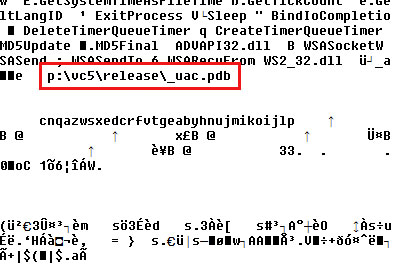- Jan 24, 2011
- 9,378
You can find here a more detailed analysis of this rootkit [PDF]Webroot said:The latest generation of a rapidly evolving family of kernel-mode rootkits called, variously, ZeroAccess or Max++, seems to get more powerful and effective with each new variant. The rootkit infects a random system driver, overwriting its code with its own, infected driver, and hijacks the storage driver chain in order to hide its presence on the disk. But its own self-protection mechanism is its most interesting characteristic: It lays a virtual tripwire.
Read more
ZeroAccess Rootkit at work :
Uploaded by eraserPX on Jul 9, 2011 (No sound)
Attachments
Last edited:

